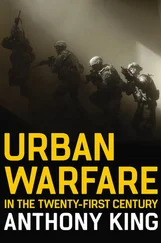The relief effort cost the German Panzer-Divisionen involved dearly, with III. Panzerkorps and XXXXVII Panzerkorps suffering a total of over 4,000 casualties. Breith’s III. Panzerkorps lost 156 tanks and assault guns during the relief effort and was left with only 60 tanks and six StuG IIIs operational. Approximately 56 per cent of the losses were due to mechanical defects, particularly with the problematic Panther (at least 15 of 37 lost in III Panzerkorps suffered engine problems and were destroyed). Indeed, on 29 February 171 of the 187 Panthers in PzAOK 1 were under repair. Von Vormann’s XXXXVII Panzerkorps had lost about 80 tanks and assault guns and was left with 32 operational tanks and 27 assault guns. The combination of muddy roads and limited recovery vehicles meant that when the relief forces retreated to new defensive lines, many non-operational tanks were blown up rather than allowed to fall into enemy hands. In order to save part of five trapped divisions, von Manstein had expended his armoured reserves.
At one stroke, Vatutin and Konev had removed two corps from Heeresgrupe Süd’s order of battle and incapacitated most of the German armour in the Ukraine, which made it virtually impossible for von Manstein to hold any kind of frontline. In the aftermath of Korsun, von Manstein was primarily focused on shoring up the left flank of Heeresgruppe Süd held by PzAOK 4, which was holding a 240km front with 12 depleted divisions. The gap between Heeresgruppe Süd’s left flank and Heeresgruppe Mitte’s right flank was only screened by the XIII Armeekorps, which failed to prevent Vatutin’s 13th Army from seizing the cities of Rovno and Lutsk on 5 February. Indeed, there was little from preventing Vatutin from driving due west into Poland. However, von Manstein’s right flank was also on the verge of collapse. The transfer of the 24.Panzer-Division to support the Korsun relief effort had weakened the German defence of the Nikopol bridgehead at a critical moment. On 2 February, Malinovsky’s 3rd Ukrainian Front attacked the left flank of Hollidt’s AOK 6 east of Krivoi Rog and quickly achieved a breakthrough that the Germans lacked the armoured reserves to block. Within 24 hours, the Soviets captured the vital rail junction at Apostolovo and threatened to isolate the IV and XVII Armeekorps in the Nikopol bridgehead. Hollidt was forced to abandon Nikpol on 7 February and retreat westward to avoid encirclement. Even when the 24. Panzer-Division was returned to Hollidt, it had lost most of its tanks and 55 per cent of its trucks in the fruitless march north to join the Korsun relief effort.
Meanwhile, the Soviets were able to replenish the 1st and 2nd Ukrainian Fronts within two weeks of the end of the Korsun battle and Zhukov was eager to press on and finish off Heeresgruppe Sud before it could be reinforced. However, Vatutin was badly wounded by Ukraininan partisans on 28 February and died six weeks later; Zhukov temporarily took command of the front. The loss of Vatutin was a serious blow to the Red Army since he had become one of its most skilled practitioners of combined arms warfare. In comparison, Konev and most of the other front commanders tended to rely more on firepower than manoeuvre or deception. Zhukov immediately began preparing for the next round and using his clout with the Stavka, he managed to acquire the 4th Tank Army (6 GMC, 10 GTC) from the RVGK; this formation was under the command of General-leytenant Vasily M. Badanov, who had led the Tatsinskaya Raid in December 1942. In addition, Zhukov was able to get replacements for the 1 TA and 3 GTA, although neither could be brought up to full strength.
On 4 March, Zhukov’s 1st Ukrainian Front attacked the boundary between PzAOK 4 and PzAOK 1, while Konev’s 2nd Ukraininan Front attacked the boundary between PzAOK 1 and AOK 8. Zhukov’s three tank armies attacked east of Tarnopol and made good progress, despite the efforts of the LSSAH , 7.Panzer-Division and s.Pz.Abt.503 (13 Tigers) to block the advance. Konev had even more success, attacking the XXXXVII Panzerkorps and VII Armeekorps in the area south of Lisiyanka with the 2 TA and 6 TA. A total of five Soviet tank armies were involved in the operation. Without adequate armoured reserves to opposive the 5 GTA, Wöhler was compelled to retreat or face envelopment, but Hube held most of his ground, centred on Proskurov. In 10 days, Konev’s forces advanced 90km toward the Dnestr River. Hitler ordered von Manstein to stand fast, even though it was apparent the front was collapsing. Zhukov’s forces were on the outskirts of Tarnopol, which Hitler declared to be a fortress and ordered held.
In the south, Malinovsky’s 3rd Ukraininan Front attacked Hollidt’s AOK 6 south of Krivoi Rog on the morning of 6 March and the 8th Guards Army achieved a major breakthrough the next day. Demonstrating great agility, the 8 GA punched through the XXIX Armeekorps, shoving aside the burnt-out 23. Panzer-Division, which had only four tanks, one assault gun and six SPWs. Soviet tanks and cavalry – not seriously impeded by the mud – advanced boldly to AOK 6’s headquarters in Novy Bug and overran many German rear-echelon units. The 23.Panzer-Division was virtually destroyed, losing all its maintenance, medical and logistic units, as well as many of its vehicles. {20} The Soviets then pivoted south to envelope five German infantry divisions from the IV Armeekorps and the 9.Panzer-Division. This trapped force was dubbed Gruppe Wittmann and since no rescue force was available, it was compelled to fight its way out of encirclement over the course of the next several weeks. Soon, all of AOK 6 was forced to retreat to avoid being cut off by fast-moving Soviet armoured spearheads. The 24.Panzer-Division fought a rearguard action, but lost over 800 men and one-quarter of its wheeled vehicles, which were immobilized by deep mud. By 13 March, AOK 6 formed a composite Panzergruppe with the remaining tanks of the 9., 23. and 24.Panzer-Divisionen – three tanks – to cover the retreat. {21} Fuel shortages plagued the Germans during the retreat, forcing them to abandon a great deal of equipment. Totenkopf ran out of fuel at Balta, just short of the Dnestr, on 27 March and when the Soviets overran the town, the division was forced to abandon over 60 tanks and assault guns, as well as 1,000 wheeled vehicles. {22} The last seven Tigers were blown up near Tiraspol by their crews on 2 April. By the time Totenkopf crossed the Dnestr into Romania, it had no tanks left.
Von Manstein expected the 1st Ukrainian Front to head west toward L’vov, so he strengthened Raus’ PzAOK 4 at the expense of Hube’s PzAOK 1. In fact, Zhukov and Konev struck southward on 18 March, breaking through on both of Hube’s flanks. On 17 March, the 2 TA reached the Dnestr River at Yampol. On 20 March, Katukov’s 1 TA re-entered the battle with 140 tanks and severed the last remaining links between Hube’s army and Raus’ PzAOK 4. At the same time, Konev unleashed Kravchenko’s 6 TA, which captured Mogilev-Podol’skiy on the Dniestr. The PzAOK 4 was in retreat and Gruppe Neinhoff, with 4,600 troops, was encircled in Tarnopol by the 1 GA. With his flanks demolished, Hube began falling back toward Kamenets-Podol’skiy, but Katukov severed his communications to the west, then managed to seize a bridgehead across the Dnestr. On 27 March, the 10 GTC from Badanov’s 4 TA captured Kamenets-Podol’skiy, which left Hube in a shrinking salient with his back to the Dnestr. He was cut off from the one remaining German-held bridge over the Dnestr at Khotin and the Luftwaffe began an airlift to supply him.
The encirclement of Hube’s PzAOK 1 was the largest catastrophe facing the Wehrmacht since Stalingrad. Hube’s army comprised over 200,000 troops in 10 Panzer-Divisionen ( LSSAH , Das Reich , 1, 6, 7, 11, 16, 17, 19), one Panzergrenadier-Division (20), 12 infantry divisions, one artillery division, s.Pz.Abt.509 and s.Panzerjäger-Abteilung 88 (Nashorn). [43]Although the army only had 35 operational tanks when it was surrounded, the loss of the veteran personnel would effectively cost Germany half her trained tankers. After much arguing with Hitler, von Manstein finally convinced him that Hube had to break out of encirclement or Heeresgruppe Süd’s front would collapse. Although it was possible that Hube could have crossed the Dnestr, this would have made it very difficult for von Manstein to establish a new front. Instead, Hube was ordered to attack westward, where a relief force would assemble near the town of Berezhany. Hube reorganized his forces for combat, dividing all his units into two main assault formations: Korpsgruppe von der Chevallerie (1., 6., 7., 11. 16, 19.Panzer-Divisionen and LSSAH , plus six infantry divisions) and Korpsgruppe Breith ( Das Reich and 17.Panzer-Division , plus seven infantry divisions). Unlike previous pockets where the entrapped forced remained stationary in order to receive air resupply, Hube did not intend to remain tied to airfields since he knew that Zhukov would soon assemble overwhelming forces around the pocket to prevent escape or rescue. Instead, Hube intended to fight his way through the Soviet encirclement and rely upon parachuted supplies. Having learned quite a bit about supplying encircled forces, the Luftwaffe sent a special team ( Kesseltrupp ) into the pocket equipped with air-ground radios, beacons and flares in order to mark drop zones as needed. {23} Hube ordered all unnecessary or damaged vehicles destroyed, in order to reduce his army’s fuel requirements. On 28 March, Hube began attacking westward with Korpsgruppe Breith .
Читать дальше
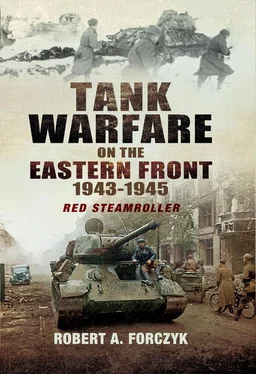



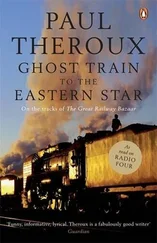
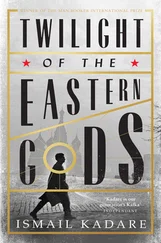
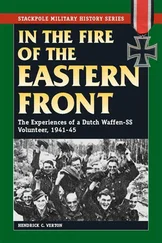

![John Stieber - Against the Odds - Survival on the Russian Front 1944-1945 [2nd Edition]](/books/405234/john-stieber-against-the-odds-survival-on-the-russian-front-1944-1945-2nd-edition-thumb.webp)


